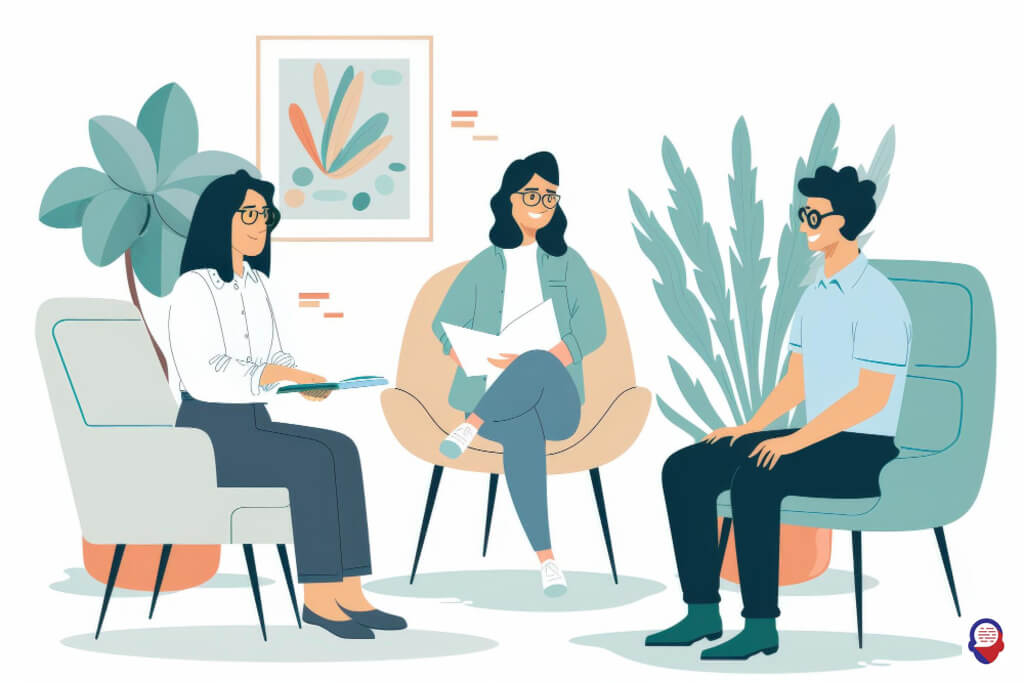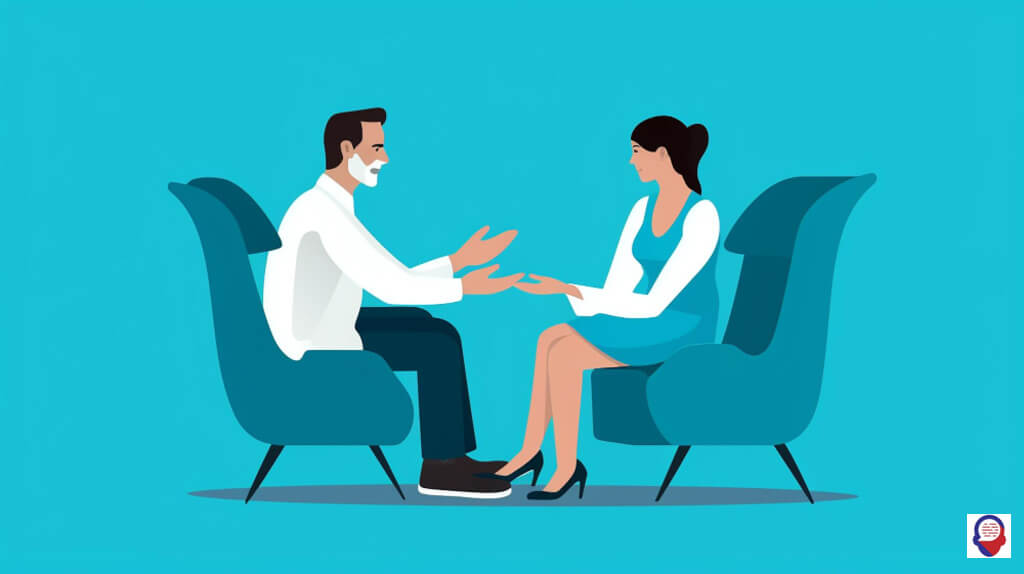Heal Your Relationship With Food Using CBT
The relationship you have with food can feel like a constant battle. It’s a landscape fraught with rules, guilt, and anxiety, a cycle where every meal is a negotiation and every reflection in the mirror feels like a judgment. This struggle is isolating, draining your energy and stealing your joy. But what if there was a way to reframe that relationship, to dismantle the rigid thinking that fuels it, and to build a new foundation of balance and self-compassion? There is, and it’s a powerful, evidence-based approach known as Cognitive Behavioral Therapy.
This therapy isn’t about willpower or simply "eating better." It’s a profound journey into the connections between your thoughts, your feelings, and your actions around food and your body. It provides a practical, structured toolkit to help you understand the very mechanics of your eating disorder and empowers you to change them, one step at a time. This is about reclaiming your life from the grip of disordered eating, moving from a place of conflict to one of peace.

What Exactly Is Cognitive Behavioral Therapy for Eating?
Cognitive Behavioral Therapy, or CBT, is a highly effective and structured form of psychotherapy that helps you identify and change destructive thinking patterns and behaviors. When specifically adapted for eating disorders, often called CBT-E (the "E" stands for "Enhanced"), it operates on the core principle that your thoughts about food, weight, and shape directly influence your emotions and, consequently, your eating behaviors.
The therapy is a collaborative process between you and your therapist. Together, you work to uncover the specific thought processes that maintain the eating disorder. These might be rigid dietary rules, an intense fear of weight gain, or an overvaluation of your self-worth based on your body.
Once these thoughts are identified, the "cognitive" part of the therapy teaches you how to challenge and restructure them, replacing them with more balanced and helpful alternatives. The "behavioral" part involves gradually changing the habits that perpetuate the cycle, such as restricting, binging, or purging, and replacing them with regular, nourishing eating patterns. It’s a practical, present-focused approach designed to give you tangible skills for lasting recovery.

How Does This Therapy Differ From Other Treatments?
This therapeutic approach stands apart from many other forms of talk therapy because of its distinct focus on the present and its highly structured, skills-based nature. Unlike psychoanalytic approaches that may delve deep into your childhood and past experiences to find the root cause of your struggles, CBT for eating centers on the "here and now." It works to understand and dismantle the mechanisms that are keeping the eating disorder active today.
The primary goal is not just to talk about the problem, but to actively solve it. Sessions are agenda-driven, with clear objectives and "homework" assignments between appointments, such as monitoring your food intake or practicing new coping skills. This makes it a very active and collaborative therapy.
Furthermore, CBT-E is one of the most researched and evidence-based treatments for eating disorders, particularly for bulimia nervosa and binge eating disorder. Its effectiveness is backed by numerous clinical trials, making it a leading first-line treatment recommended by health organizations worldwide. It provides a clear, methodical roadmap for recovery, which many people find empowering and motivating.

What Are the Core Components of This Therapeutic Approach?
The therapy is built upon a series of interconnected components, introduced in stages, that work together to systematically address the different facets of an eating disorder. These building blocks include self-monitoring to build awareness, establishing regular eating to break chaotic cycles, addressing body image disturbances, challenging distorted thoughts, and finally, developing a plan to prevent relapse.
Each component serves a specific purpose, creating a comprehensive framework for change. You and your therapist will navigate these stages together, tailoring the pace and focus to your individual needs. This structured progression ensures that you build a solid foundation of skills before moving on to more challenging aspects of recovery, making the process feel manageable and progressive.

How Does Self-Monitoring Work?
Self-monitoring is the foundational first step in CBT for eating, and it involves meticulously tracking your food and drink intake, as well as the thoughts and feelings that accompany your eating behaviors. This is typically done in real-time using a small notebook or a dedicated app. The purpose is not to count calories or to judge your choices, but to become an objective observer of your own patterns.
By recording what you ate, when, and where, you begin to see clear links between specific situations, thoughts, emotions, and subsequent behaviors like restricting or binging. It shines a light on the triggers and cycles that were previously automatic and unconscious. This newfound awareness is the crucial first piece of the puzzle, providing the raw data you and your therapist will use to understand the unique mechanics of your eating disorder and formulate a personalized plan for change.

What Is Involved in Establishing Regular Eating?
Establishing a pattern of regular eating is a cornerstone of breaking the chaotic cycle of an eating disorder. It directly counteracts the feast-or-famine mindset of restricting and binging. This behavioral strategy involves planning and consuming three meals and two to three snacks at regular intervals throughout the day, typically every three to four hours.
This structure serves several critical functions. Biologically, it helps stabilize blood sugar levels, which reduces the intense physical and psychological urges to binge that often arise from prolonged periods of restriction. Psychologically, it removes the constant, agonizing decision-making about when and what to eat, freeing up significant mental energy. By demonstrating that eating regularly does not lead to a loss of control or immediate weight gain, it directly challenges the core fears that fuel the disorder.

How Do Therapists Address Body Image Concerns?
Therapists address body image concerns by using specific techniques designed to reduce distress and shift your focus away from a critical evaluation of your appearance. This is a vital component, as a negative body image is often the central driver that maintains the eating disorder. The goal is not necessarily to make you love your body overnight, but to neutralize its power over your self-worth.
One common technique is reducing "body checking," the compulsive habit of repeatedly checking your shape or weight in mirrors, by pinching flesh, or through frequent weighing. You’ll learn to identify these behaviors and consciously reduce them. Another strategy might involve "mirror exposure," where you learn to look at your reflection with a neutral, descriptive lens rather than a critical one. The ultimate aim is to help you broaden your definition of self-worth beyond your physical shape, cultivating an appreciation for what your body can do rather than just how it looks.

What Are Cognitive Restructuring Techniques?
Cognitive restructuring is the process of identifying, challenging, and changing the unhelpful, distorted thoughts that fuel disordered eating. These thoughts, often called "automatic negative thoughts" or ANTs, are deeply ingrained beliefs about food, weight, and self-worth that pop up without conscious effort. Examples include "If I eat this piece of cake, I’ve ruined my whole week" or "I must be thin to be loved."
The first step is learning to catch these thoughts as they happen, often through the practice of self-monitoring. Once identified, you and your therapist work together to examine the evidence for and against them, as if you were a detective investigating a case. You learn to spot common cognitive distortions, such as "all-or-nothing" thinking, "catastrophizing," or "emotional reasoning." Over time, you develop the skill of replacing these biased thoughts with more balanced, realistic, and compassionate alternatives, which in turn changes your emotional response and behavior.

How Are Relapse Prevention Strategies Developed?
Relapse prevention is the final, crucial stage of therapy, designed to equip you with the tools and confidence to maintain your progress long after your sessions have ended. It involves looking ahead to identify potential high-risk situations that could trigger a return to old behaviors. These might include stressful life events, social gatherings involving food, or encountering negative comments about weight.
Once these potential challenges are identified, you and your therapist collaboratively create a detailed, personalized "maintenance plan." This plan acts as your blueprint for navigating future difficulties. It outlines specific coping strategies to use when you feel vulnerable, reminds you of the progress you’ve made, and includes a clear course of action to take if you experience a lapse or setback. This proactive approach transforms setbacks from perceived failures into learning opportunities, empowering you to get back on track quickly and solidifying your long-term recovery.

Who Can Benefit Most From This Form of Therapy?
This form of therapy is particularly beneficial for individuals struggling with bulimia nervosa, binge eating disorder, and other similar eating disorders where cycles of binging and compensatory behaviors are present. Its structured approach directly targets the core psychological features of these conditions, such as the intense preoccupation with weight and shape and the rigid, all-or-nothing dietary rules.
People who are ready to take an active, collaborative role in their recovery often thrive in a CBT framework. Because it involves homework and skill-building, it suits those who appreciate a clear, logical, and goal-oriented path forward. It is also highly effective for individuals who feel "stuck" in their thought patterns and are looking for practical tools to break free.
While it can also be adapted for anorexia nervosa, it is often used after a person’s weight has been stabilized through other interventions, as severe malnutrition can impair the cognitive ability needed to engage fully with the therapy. Ultimately, its effectiveness hinges on a person’s willingness to engage with the process and practice the skills learned in session in their daily life.

What Can Someone Expect During a Typical Session?
You can expect a typical session to be structured, collaborative, and goal-focused. Unlike less structured forms of therapy where the conversation might meander, each CBT session begins with a clear agenda that you and your therapist set together. This usually starts with a brief check-in about your week and a review of the "homework" you completed.
The bulk of the session is dedicated to learning and practicing a new skill or tackling a specific problem identified in your self-monitoring records. This could involve challenging a particular negative thought, planning for a difficult social event, or discussing the mechanics of regular eating. The therapist acts as a coach and guide, teaching you concepts and techniques that you can then apply in your own life.
The final part of the session involves summarizing what was discussed and agreeing on a new homework assignment for the upcoming week. This ensures that the work continues between appointments. The entire process is transparent and empowering, designed to make you an expert in your own recovery.

Is This Therapy a Quick Fix?
No, this therapy is not a quick fix, but rather a comprehensive process that requires consistent effort and commitment. While some people may begin to experience positive changes relatively early on, lasting recovery is a journey, not a destination reached overnight. The therapy is designed to create deep, sustainable change in long-standing patterns of thinking and behavior.
A typical course of CBT-E involves around 20 sessions for most eating disorders, often spread over five to six months. For individuals who are underweight, the treatment is longer, usually around 40 sessions over a period of about a year, to accommodate the process of weight restoration.
It’s important to approach the therapy with realistic expectations. There will be moments of significant progress and weeks that feel more challenging. Setbacks are a normal and expected part of the process. The strength of this approach lies in its ability to teach you how to handle those setbacks, building resilience and ensuring that you have the skills to manage your relationship with food for the rest of your life.

How Can I Prepare for My First Therapy Session?
You can prepare for your first therapy session by approaching it with an open mind and a willingness to be honest, both with your therapist and with yourself. There is no need to have everything figured out before you arrive; the purpose of the first session is for you and the therapist to get to know each other and determine if you are a good fit.
It can be helpful to think about what you hope to achieve through therapy. What are your goals? What aspects of your life are being most affected by your struggles with eating? Having some initial thoughts on these questions can provide a useful starting point for the conversation.
Most importantly, remember that the therapist is there to help, not to judge. They understand the courage it takes to seek help and will create a safe, confidential space for you to share your experiences. Simply showing up is the most important and powerful first step you can take.
Frequently Asked Questions

Is CBT-E effective for anorexia nervosa?
Yes, CBT-E can be an effective treatment for anorexia nervosa, but its application is often staged. The first priority in treating anorexia is medical stabilization and nutritional rehabilitation to restore weight. Severe malnourishment impairs concentration and cognitive flexibility, making it difficult to engage in the "thinking" part of CBT. Once weight is partially or fully restored, a more intensive, 40-session version of CBT-E is used to address the underlying psychological aspects of the disorder, such as the intense fear of weight gain and the overvaluation of thinness.

Do I have to be a certain weight to start this therapy?
No, you do not have to be a specific weight to begin, but your weight will inform the treatment plan. For individuals with bulimia or binge eating disorder who are in a medically stable weight range, therapy can begin immediately. For individuals with anorexia who are significantly underweight, the initial focus of therapy, often in conjunction with medical and dietetic support, will be on nutritional rehabilitation and weight restoration before moving into the other core components of CBT-E.

Can this therapy be done online?
Yes, this therapy can be delivered very effectively online through video conferencing. Numerous studies have shown that therapist-guided online CBT-E is just as effective as in-person therapy for many individuals. This format increases accessibility for people who may live in remote areas, have mobility issues, or have schedules that make in-person appointments difficult. It’s crucial to ensure the therapist is properly qualified and that the platform used is secure and confidential.

Will I have to talk about my childhood?
Generally, you will not have to spend significant time talking about your childhood. The focus of CBT-E is firmly on the present, exploring the thoughts and behaviors that are maintaining the eating disorder right now. While your therapist may ask some questions about your history to gain context, the therapy will not involve a deep dive into your past. The core work is about developing skills to change your current patterns and build a healthier future.
The path to healing your relationship with food is a journey of courage, and you do not have to walk it alone. Taking the first step is often the hardest, but it is the most important one you will ever take towards reclaiming your life.
At Counselling-uk, we provide a safe, confidential, and professional place for you to find the support you deserve. Our dedicated therapists are here to help you navigate all of life’s challenges, offering expert guidance with compassion and respect. If you are ready to change your story and build a future free from the struggle with food, we are here to help you begin. Reach out today, and let’s take that first brave step together.




Behavioral therapy helps individuals replace unhealthy behaviors with healthier alternatives. Through reinforcement and rewards for positive behaviors, individuals can learn healthy coping strategies for difficult situations. Examples include relaxation techniques such as deep breathing or progressive muscle relaxation; distraction techniques such as reading or listening to music; problem-solving skills; social support; physical activity; nutrition education; meal planning; goal setting; and mindfulness practices.